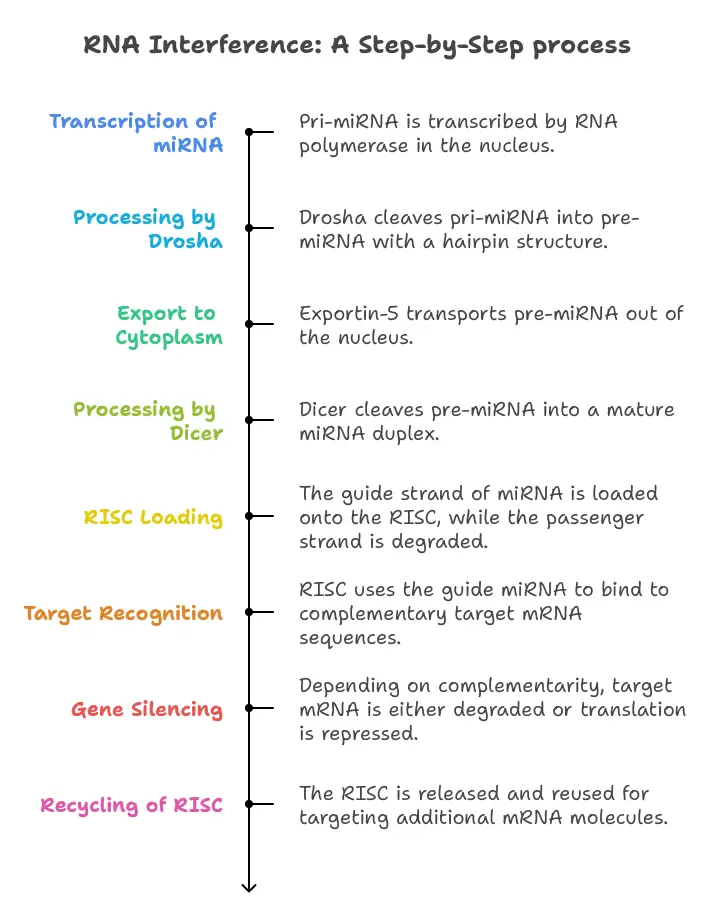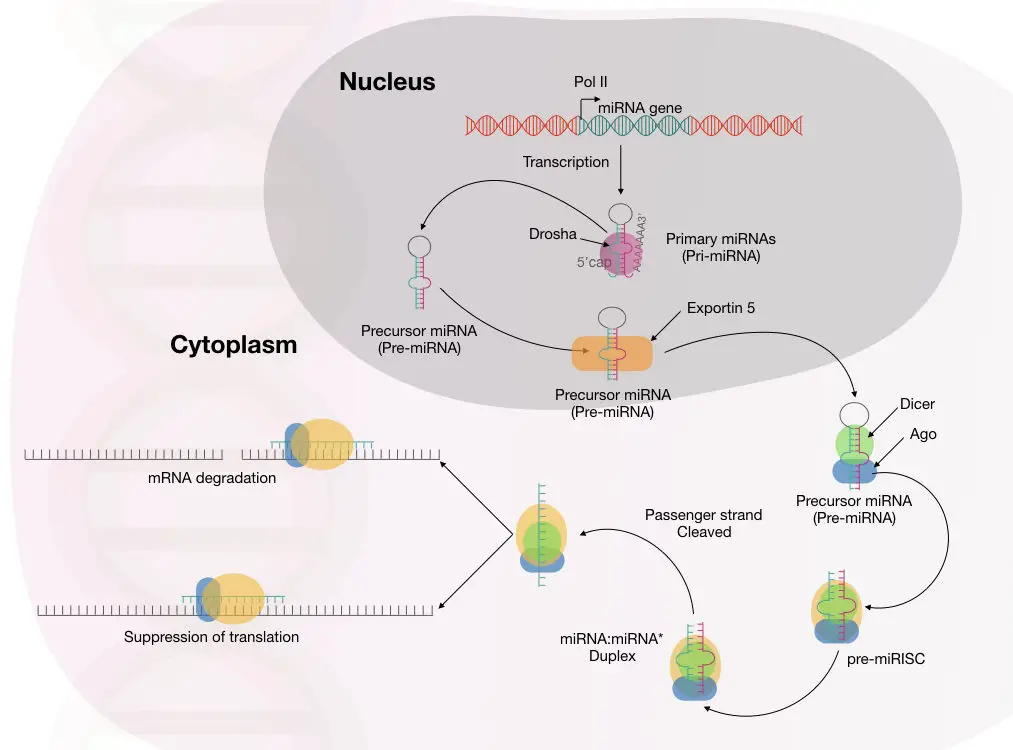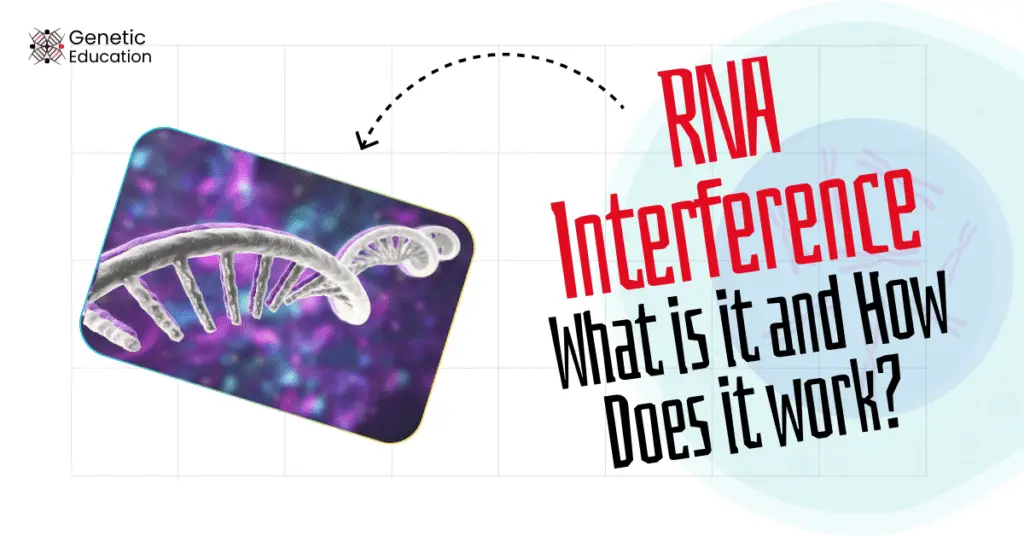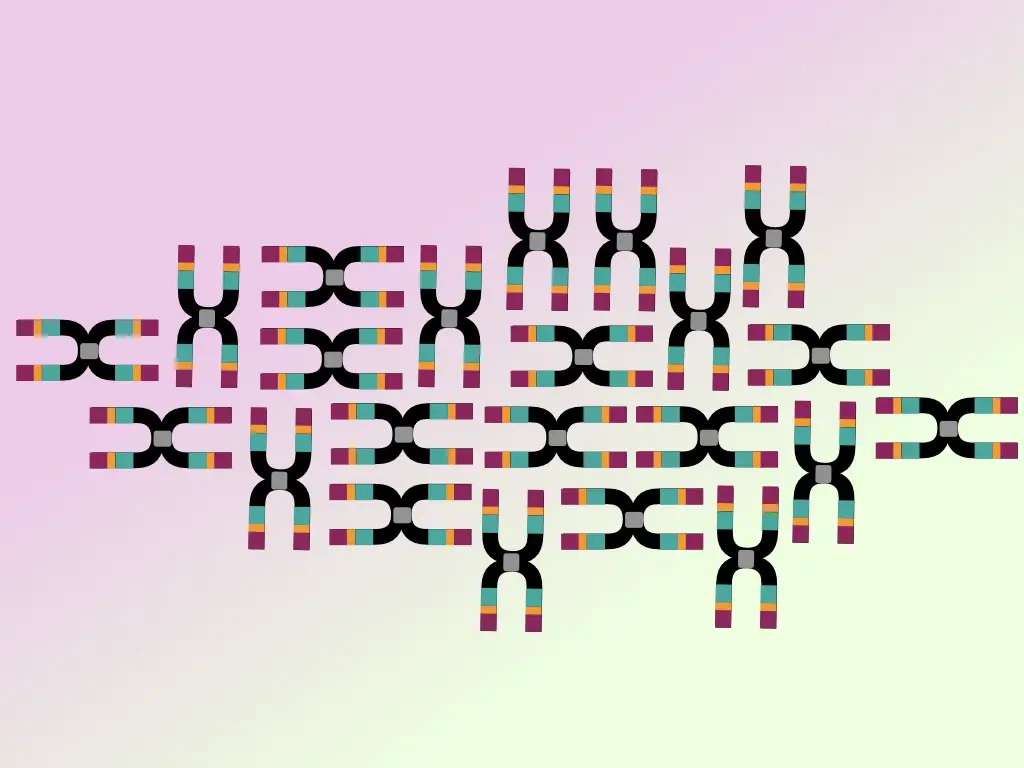“RNA interference is a process of regulating gene expression by targeted mRNA silencing using small double-stranded RNA. Explore the concept of RNAi in this article.”
Double-stranded RNA is uncommon for eukaryotes, its presence is a sign of danger. However, such short double-stranded RNAs play a crucial role in epigenetic regulation.
Known as gene regulation, the short double-stranded RNA participates in a crucial biological process for regulating protein synthesis at a tissue level. These activities are collectively covered in RNA interference.
This article was written for students to help them understand the importance of gene regulation by RNA interference. However, to better understand the present topic, you need to read our previous articles on siRNA and miRNA.
Stay tuned.
Disclaimer: The content presented herein has been compiled from reputable, peer-reviewed sources and is presented in an easy to understand manner for better comprehension. A complete list of sources is provided after the article for reference.

Key Topics:
What is RNA interference?
Smaller and double-stranded RNAs gained recognition after Ambros V and Ruvkun G were awarded the Nobel Prize for Medicine or Physiology in 2024. However, it isn’t new for us!
The molecular mechanism behind RNA interference was discovered by Fire And Mello C. in 1993. In 2013, Fortune magazine announced the discovery of RNA interference as “Biotech’s Billion Dollar Breakthrough.”
Research and discoveries around RNA interference have won 2 Nobel Prizes in total. So the question you may have is, why is this phenomenon so important? And what is it?
RNA interference is a component of our innate immune system. Meaning, it protects against foreign invaders and also regulates gene expression using the same mechanism.
Retroviruses (RNA viruses), when they attach to our cells, our cells destroy them with RNA interference, and save some short dsRNA molecules for future use. When the same virus infects in the future, it uses it to recognize the viral RNA and destroy it.
The process by which the viral RNA is processed is known as RNA interference. Now, the same mechanism is used against our own mRNA.
Several RNAs may participate in the transcription process, but they can’t synthesize a protein. Those are smaller double-stranded RNAs known as microRNA.
This microRNA plays a crucial role as it provides a guiding strand to neutralize the mRNA and prevent protein synthesis, again an act of RNA interference. Keep in mind, miRNA and mRNA are different.
This article is all about how microRNA regulates gene expression. We will discuss the RNA interference process for mRNA silencing, antiviral defense and transposon silencing. The stepwise process is explained here.
How does RNA interference work?

The whole process occurs in both the nucleus and cytoplasm. Note that microRNAs govern the gene regulation process by RNA interference.
The primary miRNA is synthesized into the cell nucleus by RNA polymerase II, comes out into the cytoplasm and is converted into the precursor RNA and mature miRNA by the activities of Drosha and Dicer, respectively.
MicroRNA has one guide strand and another passenger strand. The dinucleotide overhang present on the 3’ end helps recognize the guide strand. We already discussed microRNA synthesis and processing in our previous article.
RNA interference in gene regulation
The mature microRNA is first loaded into the RISC (RNA-Induced Silencing Complex). RISC is a complex made up of different proteins.
RISC
RNA-Inducing Silencing Complex is a multiprotein ribonuclease. It acts as a molecular machinery, using miRNA, it performs targeted gene regulation.
→ Argonaute protein is the main component of the complex.
→ Argonaute protein is the central, important and catalytic unit of RISC.
→ Guided RNA provides the sequence specificity needed for target recognition.
Accessory proteins like GW182, TRBP, etc, enhance the assembly, stability, and functionality of RISC
Next, the useless passenger strand is removed from the complex.
One of the RISC proteins, Argonaute or Ago2, finds the complementary nucleotides on the 3’ end of the mRNA. It loads the complex on the target mRNA and processes it.
Argonaute protein:
The Ago2 or Argonaute protein has the highly conserved DNA domains among eukaryotes, archaea and bacteria. It’s like the catalytic core of the RISC complex, which binds with the RNA guide strand and performs RNA interference.
→ Binds RNA guide strand for sequence-specific targeting.
→ Facilitates pairing with complementary target RNA.
→ Cleaves target RNA via the PIWI domain.
→ Mediates translational repression or RNA destabilization when cleavage is not possible.
If it is a complete complementation, the complex cleaves off the mRNA; otherwise, it remains attached and blocks protein synthesis. In either case, the target mRNA can not undergo protein synthesis.
A gene can not find its destination and synthesize a protein! And that’s the whole purpose.
Lastly, the components of RISC are recycled for further use while the miRNA is removed to avoid unwanted gene silencing.
RNA interference in antiviral defense:
HIV, Influenza and rabies are RNA viruses. Their genetic material is RNA, which, when introduced into the host, rapidly replicates and transcribes using the host genome.
During a positive viral infection, our innate immune system triggers and activates RNA interference. Our cells synthesize or use a pre-existing short RNA molecule complementary to the viral RNA.
It binds there, processes in the RISC complex and destroys it. In addition, it saves some short fragments, as a marker or hallmark for future use!
RNA interference for transposons:
Transposons are jumping genetic entities, enabling DNA transposition from one location to another. Upon activation, transposons produce genomic instability, disrupt gene function and induce chromosomal rearrangements.
Consequently, it produces epigenetic instability and influences gene regulation. piRNA, a special class of non-coding, double-stranded and short RNAs, processes transposons for RNA interference.
piRNAs are associated with the Argonaute protein subclass known as the Piwi protein. It creates a dedicated piRISC for transposon silencing. The piRNA guides the Piwi protein-piRISC complex to transposon-derived RNA.
Here, it performs post-translational silencing by cleaving or promoting transcriptional repression. By doing so, it regulates the transposon-derived RNAs and prevents genetic instability.
Note that such instability contributes to cancer.
Therapeutic applications of RNAi:
The in vitro RNAi process uses siRNAs, synthetic miRNA-like molecules, to perform targeted gene silencing. It has been used to treat genetic diseases, cancer and develop antiviral agents against HIV and other viruses.
We already discussed the therapeutic applications of siRNA in our previous article. You can read that article to learn more.
Wrapping up:
Nature has given us many superpowers that we are unaware of! RNAi is among those, enable our cells to regulate gene expression on their own. Scientists are looking forward to using the present approach against cancer.
Synthetic and targeted dsRNAs have been designed, incorporated and expressed to perform targeted gene silencing.
I hope these fundamentals help you to gain insight into the epigenetic machinery and understand how the fine line between genetics and epigenetics controls our cellular activities.
Share this article and subscribe to Genetic Education.
Sources:
- Vaishnaw AK, Gollob J, Gamba-Vitalo C, et al. A status report on RNAi therapeutics. Silence. 2010;1(1):14. Published 2010 Jul 8. doi:10.1186/1758-907X-1-14.
- RNA interference by NCBI.
- Zamore DP, Tuschl T, Sharp AP and Bartel PB. Double-stranded RNA directs the ATP-dependent cleavage of mRNA at 21 to 23 nucleotide intervals. Cell. 2000;1(101): 25-33. https://doi.org/10.1016/S0092-8674(00)80620-0.
- RNA interference by Encyclopedia Britannica.
- Cornec A, Poirier EZ. Interplay between RNA interference and transposable elements in mammals. Front Immunol. 2023 July 5;14:1212086. doi: 10.3389/fimmu.2023.1212086. PMID: 37475864; PMCID: PMC10354258.



Awesome site
Thank you Twinkle yadav